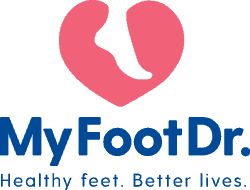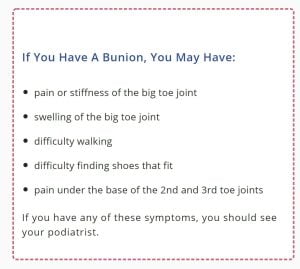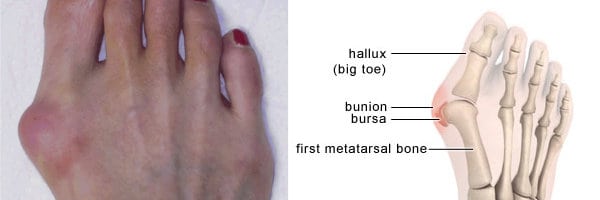
Did you know that 23% of people aged 18 to 65 have bunions, 36% of people older than 65 have bunions and of these percentages, 85% are women? Women and the elderly are more likely to suffer from this condition more than anyone else. Do you know why?
Find out more as we look into the causes and symptoms of this condition. If you happen to be among those suffering from a bunion, you will be able to get answers as to how you can manage this condition.
What are Bunions
A bunion refers to a bump that forms on the joint at the base of your big toe. Despite popular myth, bunions are NOT genetic or inherited. If a bunion was genetic, you would be born with your big toe joint in that position. “A bunion develops because of an individual’s foot morphology and how their feet interact with the ground during dynamic motion.” It is certain foot types that make a person prone to developing a bunion. Wearing shoes that crowd the toes can make the deformity become progressively worse (hence, why women have a much greater incidence of bunions) and increased periods of time spent barefoot on hard surfaces.
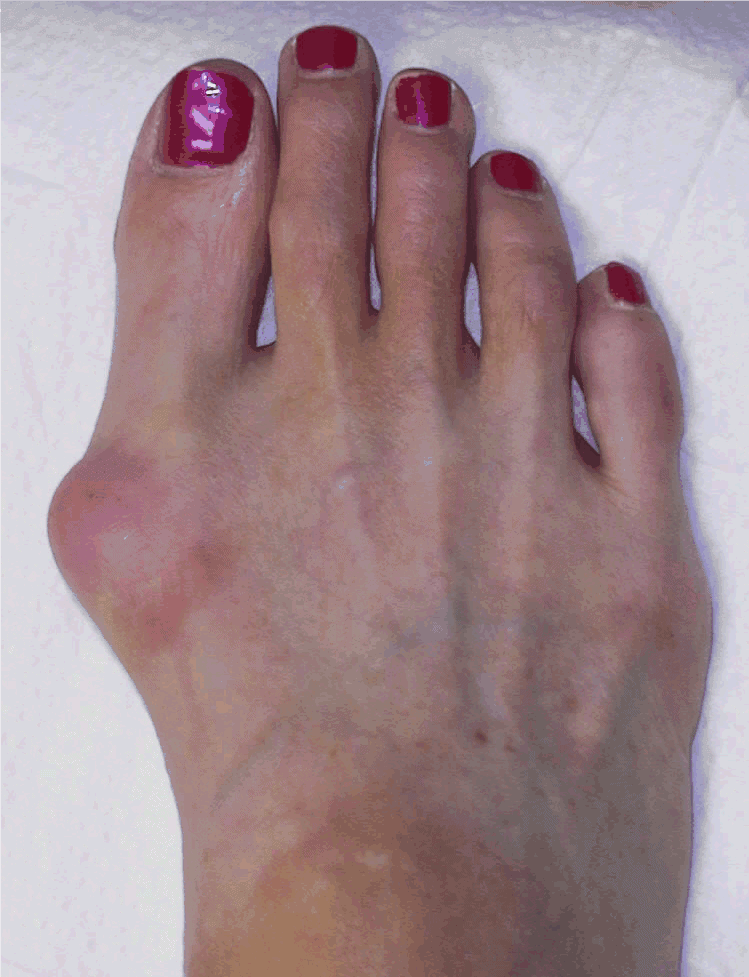 |
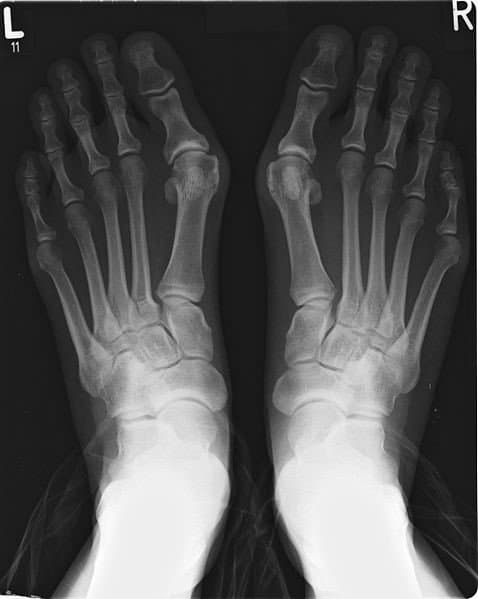 |
| Woman’s feet with Bunion | X-ray of the affected feet |
Causes of Bunions
There are many reasons why this deformity occurs and more than one may be occurring at the same time. Causes include:
- Hereditary factors
- Footwear habits
- Foot morphology
- Biomechanical factors (pronation)
- Neuromuscular dysfunction
- Hypermobility/Ligamentous laxity
The most common causative factor is inheriting a foot type from your family that is prone to bunions. Feet that pronate excessively also have a higher incidence of bunion deformities forming.
Due to the positional change that the hallux (big toe) undergoes, pain commonly occurs. As the foot progresses through the gait cycle the hallux plays an integral role during propulsion/toe-off and in propelling the body forward on to the next step. The big toe joint accepts a great deal of force during this motion. When the normal mechanics are interrupted due to the changed joint position, the normal loading of the joints is affected. Eventually, the big toe joint undergoes early degenerative changes of the normal joint cartilage resulting in joint space narrowing.
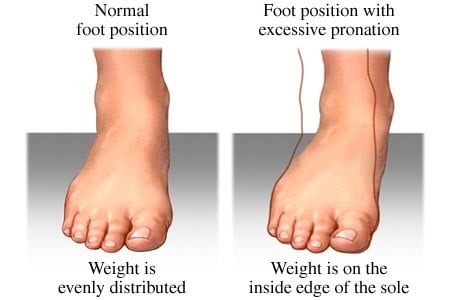
Normal Foot Positioning vs. Foot Position with Excessive Pronation
Like in many other conditions, it is important to understand what is causing the abnormality and at what level the degeneration has reached. Bunions have four significant stages and it may take many years to progress from one stage to another. Each stage gives an indication of what level of degeneration is present. A thorough history and examination of the problem are required, along with establishing what may be causing the bunions and what could be accelerating their development.
Symptoms of Bunions
Symptoms, which occur at the site of the bunion, may include:
- Pain or soreness
- Inflammation and redness
- A burning sensation
- Possible numbness
Symptoms occur most often when wearing shoes that crowd the toes, such as shoes with a tight toe box or high heels. This may explain why women are more likely to have symptoms than men. Women experience 75% more foot problems than men. In addition, spending long periods of time on your feet can aggravate the symptoms of bunions.
Diagnosis
Bunions are readily apparent – the prominence is visible at the base of the big toe or side of the foot. However, as there are 4 different stages to the condition, x-rays may be taken (but are not essential) to determine the degree of the deformity and assess the degree of degenerative change that has occurred.
Bunions are a progressive disorder – they “DO NOT GO AWAY” and will gradually deteriorate over time! But not all cases are the same, some bunions progress more rapidly than others. Once your podiatrist has evaluated your bunion, a care management plan can be developed that is suited to your needs and is in line with the stage of your bunion.
Care Management
There are two ways to manage bunions, conservatively and surgically.
Non-Surgical Care Management
Conservative care management is the first line of care management and should always be considered as an option before surgery. To reduce the chance of damage to the big toe joint, periodic evaluation and x-rays are advised. In addition, to delay the progression and prevent further damage, anyone with a bunion is advised to seek care management. The “EARLIER” care management begins, the better the success. Keep in mind that conservative care management CANNOT reverse the deformity. Conservative care management can only help to delay the progression and help with symptoms. Early care management aim to achieve several functions:
- Ease the pain of bunions (if any is apparent)
- Reduce the causative factors
- Prevent further degeneration
- Reduce the symptoms
- Establish proper functioning of the big toe joint
- Re-establish the normal centre of pressure through the foot
- Allow the foot to interact more biomechanically efficiently with the ground
Care Management may consist of:
- Night splints to align the toe correctly
- Orthotic therapy which helps with realigning the foot. With the aid of an orthotic, they help to prevent further degeneration and/or reduce symptoms of bunions
- Debridement of corns and calluses produced due to changes in foot pressure
- Changes in shoewear. Wearing the right kind of shoes is very important. Choose shoes that have a wide toe box and forgo those with pointed toes or high heels, which may aggravate the condition.
- Pads placed over the area of the bunion can help minimise pain.
- Activity modifications. Avoid activity that causes bunion pain, including standing for long periods of time.
- Oral or topical non-steroidal anti-inflammatory drugs may be recommended to reduce pain and inflammation.
- Applying an ice pack several times a day helps reduce inflammation and pain.
- Although rarely used in bunion care management, injections of corticosteroids may be useful in managing the inflamed bursa (fluid-filled sac located around a joint) sometimes seen with bunions.
When Is Surgery Needed?
If non-surgical care management fail to relieve bunion pain and when the pain of a bunion interferes with activities of daily living, surgical options with a foot and ankle surgeon should be considered. There are many surgical procedures available to manage bunions. The procedures are designed to:
- Remove the “bump” on the side of the big toe joint
- Correct the changes in the bony structure of the foot
- Correct soft tissue adaptations that have occurred
- Pain reduction
In selecting the procedure or combination of procedures for your particular case, the foot and ankle surgeon will take into consideration the extent of your deformity based on the x-ray findings, your age, your activity level, and other factors. The length of the recovery period will vary, depending on the procedure or procedures performed.
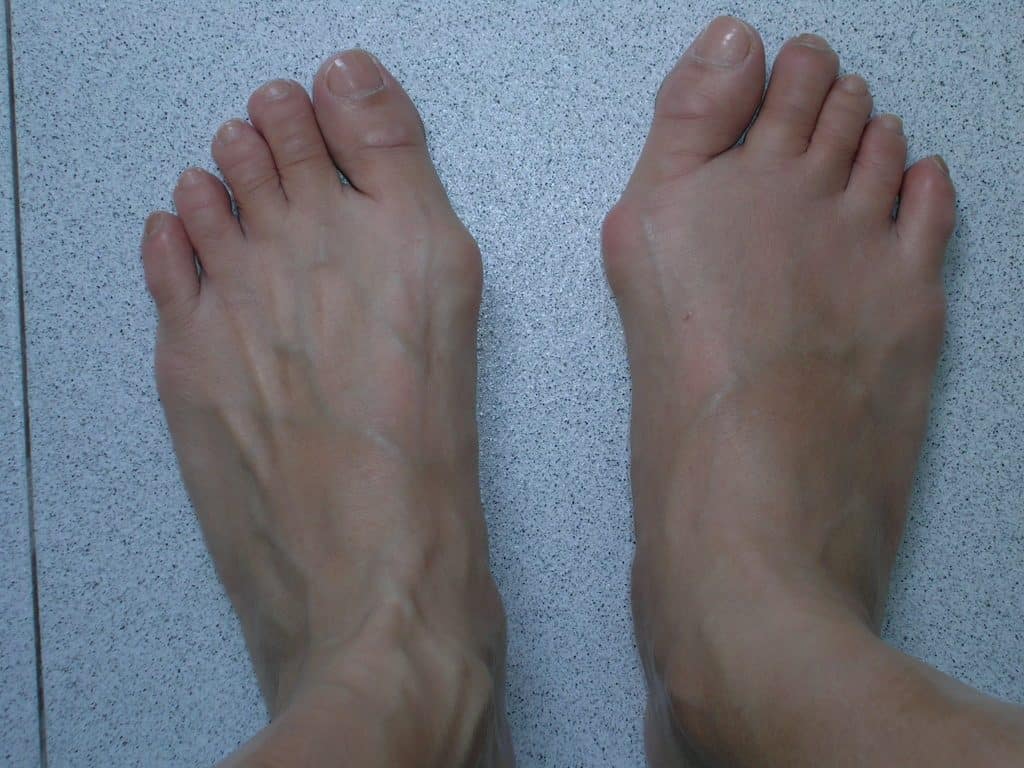 Pre-Surgery Pre-Surgery |
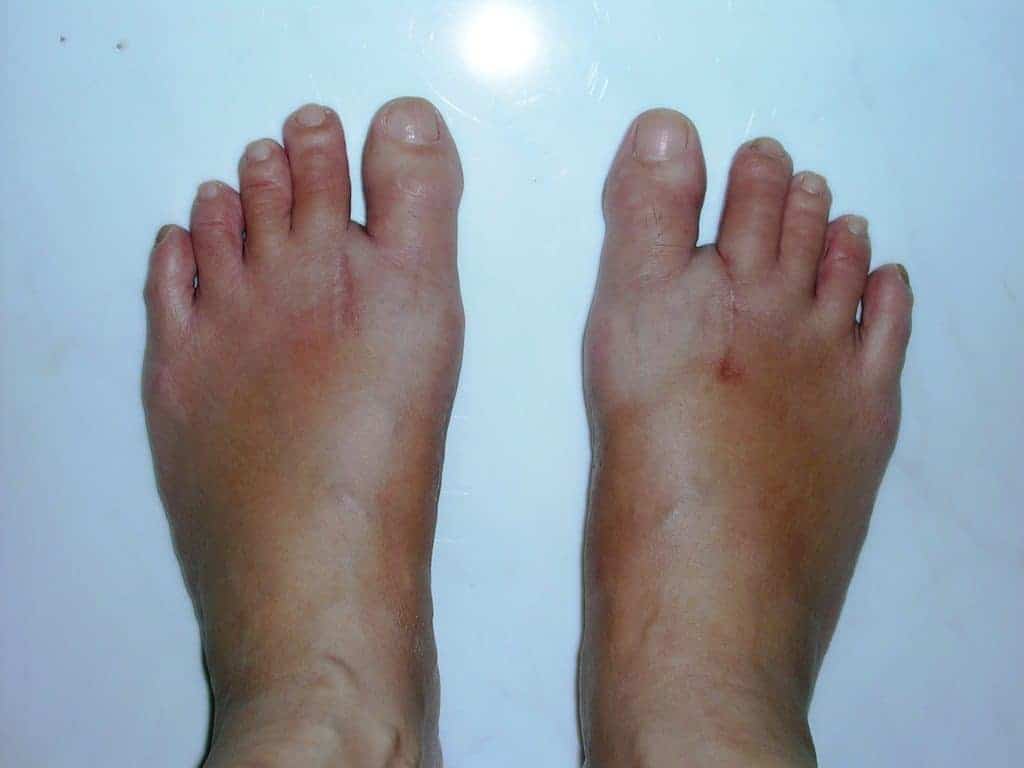 Post Surgery Post Surgery |
We hope that this article has been informative in providing you with the necessary information as to what are bunions all about. If you feel you may be developing bunions, or you already have one, the best thing to do is seek professional advice and care management from our podiatrist at my FootDr Singapore. For a podiatry consultation, you may book the appointment online, connect with us over enquiry form or call us.
The Podiatry team at my FootDr Singapore are all highly trained and skilled at managing and resolving these conditions holistically.
Call our friendly reception team today to book your appointment.
